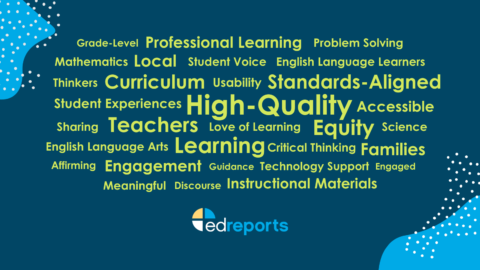Mathematicians at Work, Expect Noise: A Conversation with Georgina Rivera
EdReports Director of Mathematics, Tim Truitt, spoke with Georgina Rivera, incoming 2nd Vice President of the National Council of Supervisors of Mathematics (NCSM), about her journey as an educator and how to achieve equity in mathematics classrooms. Read part one of their conversation.
Related Resources
How to Develop Local Priorities When Selecting Instructional Materials
A resource to help adoption committees communicate the expectations for teaching and learning that creates a foundation for what the district considers effective instruction in a classroom.
“Everybody Wants to Be Seen”: A Conversation with Mathematician Georgina Rivera
Read part two of a conversation between EdReports Director of Mathematics Tim Truitt and Georgina Rivera, incoming 2nd Vice President of the National Council of Supervisors of Mathematics, about equitable mathematics and incorporating students' lives and experiences into the classroom.
Educators Sound Off: How I define high-quality curricula
EdReports reviewers from around the country share the importance of high-quality curricula that speak to students' perspectives and lived experiences.


